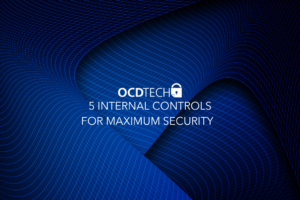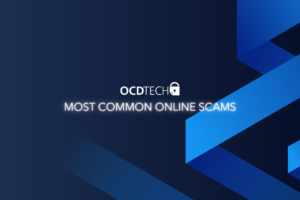As a founder, turning your app idea into reality is no longer a complex process that requires a team of engineers. Platforms like FlutterFlow have revolutionized how apps are built, allowing even non-technical founders to create visually stunning, functional applications with minimal coding knowledge. But while FlutterFlow takes much of the technical burden off your shoulders, there’s one aspect it doesn’t fully address: SOC2® compliance.
If your app handles sensitive data, especially in sectors like finance, healthcare, or SaaS B2B, having a secure development platform is only half the battle. The other half? Proving that your organization takes data security seriously by achieving SOC2® compliance. In this article, we’ll explore why SOC2® is crucial for your business and how you can address the compliance gap when building on FlutterFlow.
What is SOC2®, and Why Do You Need It?
SOC2® (System and Organization Controls 2) is a set of compliance standards created by the AICPA that evaluates how companies handle sensitive customer information. SOC2® focuses on five key “trust principles”: security, availability, processing integrity, confidentiality, and privacy.
For startups and founders launching apps, SOC2® compliance serves as a trust signal to potential clients and partners. If you’re developing a SaaS product or any platform that manages sensitive customer data, SOC2® becomes a necessary component of your growth strategy. Without it, you risk losing contracts, alienating investors, or, worse, facing the repercussions of a data breach.
Here’s why SOC2® compliance is essential:
- B2B Clients Expect It: Large enterprise customers, particularly in regulated industries, will likely ask for a SOC2® report as part of their due diligence before using your service
- Investors Prioritize Security: Investors are more willing to back startups that demonstrate robust security measures through SOC2® compliance.
- Operational Safeguards: SOC2® pushes you to implement best practices around data security, which helps mitigate risks like breaches or service outages.
- Reputation: SOC2® compliance tells the market that your company is mature and trustworthy, giving you a competitive advantage.
FlutterFlow: A Modern App-Building Platform
FlutterFlow has quickly become a favorite among founders looking for a no-code/low-code platform that offers rapid prototyping and a smooth development experience. Built on Flutter, Google’s UI toolkit, FlutterFlow allows users to create beautiful, fully functional applications without writing extensive code. It’s particularly known for its ability to deliver cross-platform apps with minimal effort, enabling developers to deploy to iOS, Android, and the web from one codebase.
Some of FlutterFlow’s key features include:
- Drag-and-Drop Interface: Build and design app layouts quickly with an intuitive visual interface.
- Firebase Integration: FlutterFlow integrates seamlessly with Firebase, allowing for easy backend services, data storage, and user authentication.
- Cross-Platform Deployment: With FlutterFlow, you can develop an app once and deploy it across multiple platforms, reducing development time and costs.
- Custom Code Support: Unlike some other no-code platforms, FlutterFlow gives you the flexibility to add custom code where needed, offering more control and customization.
However, while FlutterFlow provides the tools to bring your app to life, it doesn’t take care of the critical organizational and procedural elements required for SOC2® compliance.
What FlutterFlow Doesn’t Cover: The Compliance Puzzle
SOC2® compliance involves more than building a secure app—it demands that your entire organization has the right systems, policies, and procedures in place to manage data securely. Here are some areas where FlutterFlow falls short when it comes to SOC2®:
- Data Governance and Documentation: SOC2® requires formal documentation of how your company handles data across the entire lifecycle. While FlutterFlow integrates with Firebase for data storage, it doesn’t automatically provide the documentation or data governance policies required by SOC2.
- Access Control and User Management: SOC2® requires strict access controls for both employees and systems interacting with sensitive data. While FlutterFlow enables you to build user authentication features for your app, managing access to critical infrastructure across your organization is something you’ll need to implement separately.
- Incident Response Plans: In the event of a security breach or data incident, SOC2® expects you to have a well-documented incident response plan. While FlutterFlow offers integration with third-party services, the broader organizational processes like incident response and disaster recovery plans must be implemented by you.
- Audit Logging and Monitoring: SOC2® demands ongoing monitoring and auditing of who accesses your systems and data. FlutterFlow doesn’t offer built-in compliance tools for monitoring access to sensitive information within your app or organization.
- Vendor Risk Management: Many apps rely on third-party services (e.g., hosting providers, payment processors) to function. SOC2® compliance requires that you manage and monitor the security risks associated with these vendors. This is something FlutterFlow doesn’t handle out of the box.
Achieving SOC2® Compliance While Using FlutterFlow
To build a successful app on FlutterFlow while ensuring SOC2® compliance, you’ll need to layer in additional security measures and processes. Here’s how to get started:
1. Conduct a Security Gap Assessment: Before seeking SOC2® certification, work with a security consultant to identify any gaps in your current processes. This assessment will help you determine which areas need attention.
2. Establish Organizational Policies: Create comprehensive policies for data handling, access control, incident response, and vendor management. These policies should align with SOC2’s® trust service principles and be applied across your entire organization, not just your app.
3. Leverage Third-Party Tools: Integrate tools that provide logging, monitoring, and access control management beyond what FlutterFlow offers. Cloud security tools, monitoring platforms, and encryption services can fill in these gaps.
4. Prepare for Regular Audits: SOC2® compliance requires ongoing efforts, not a one-time certification. Ensure that you’re prepared for regular security audits and reviews, which will help keep your organization aligned with SOC2 standards as it grows.
5. Train Your Team: SOC2® compliance isn’t just about technology—it’s also about ensuring that your employees understand their roles in maintaining data security. Provide ongoing training and awareness programs to keep everyone aligned.




